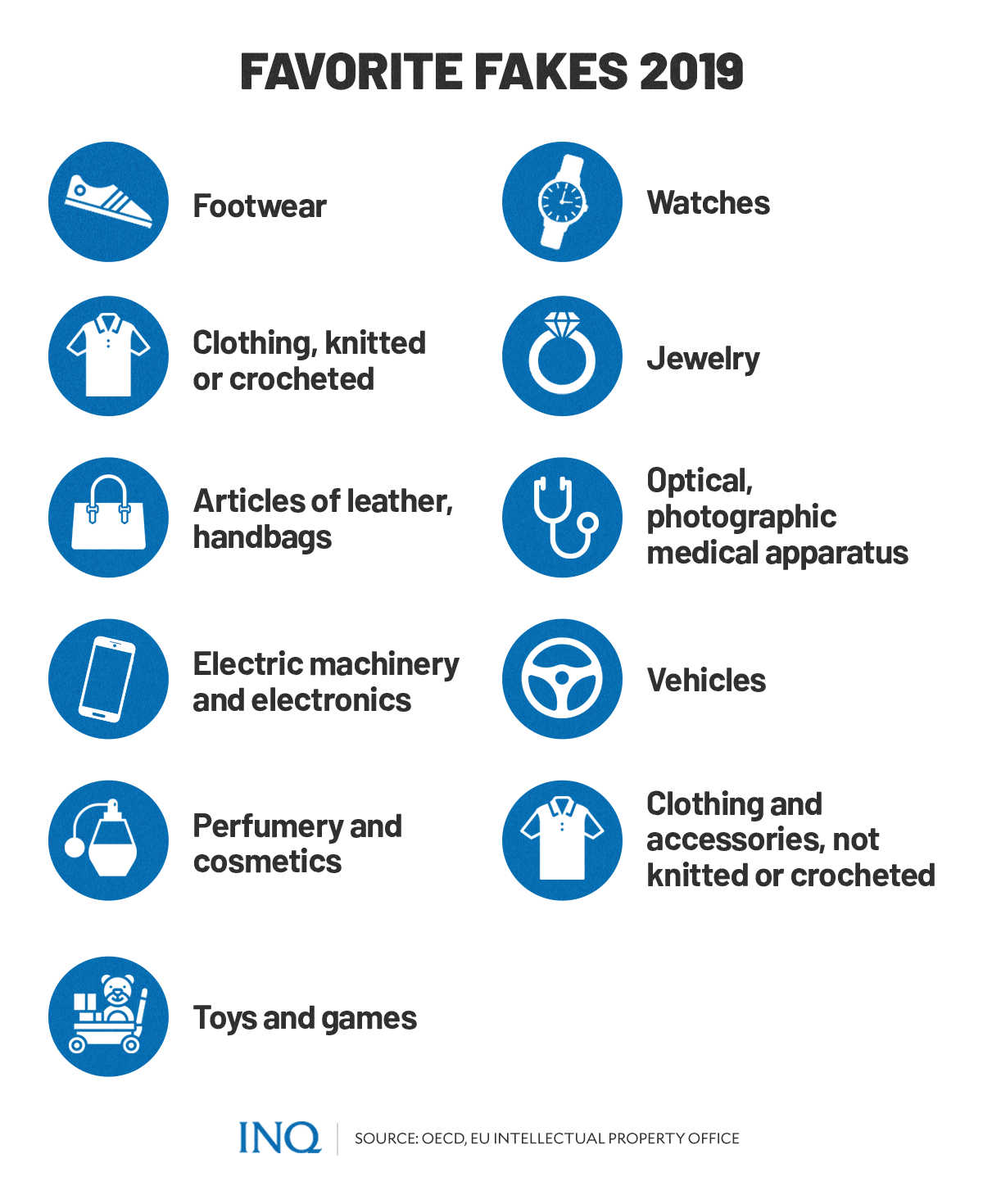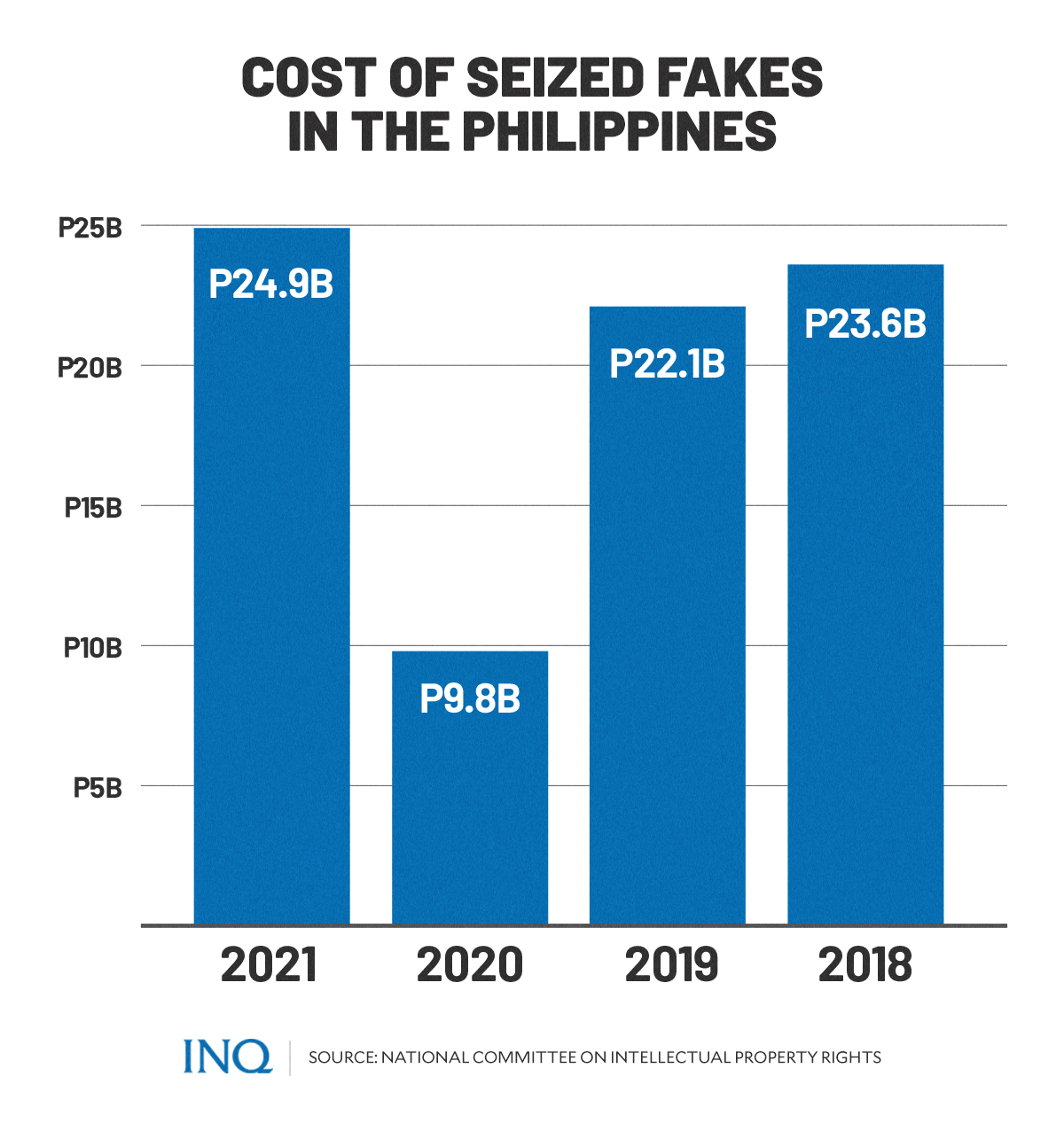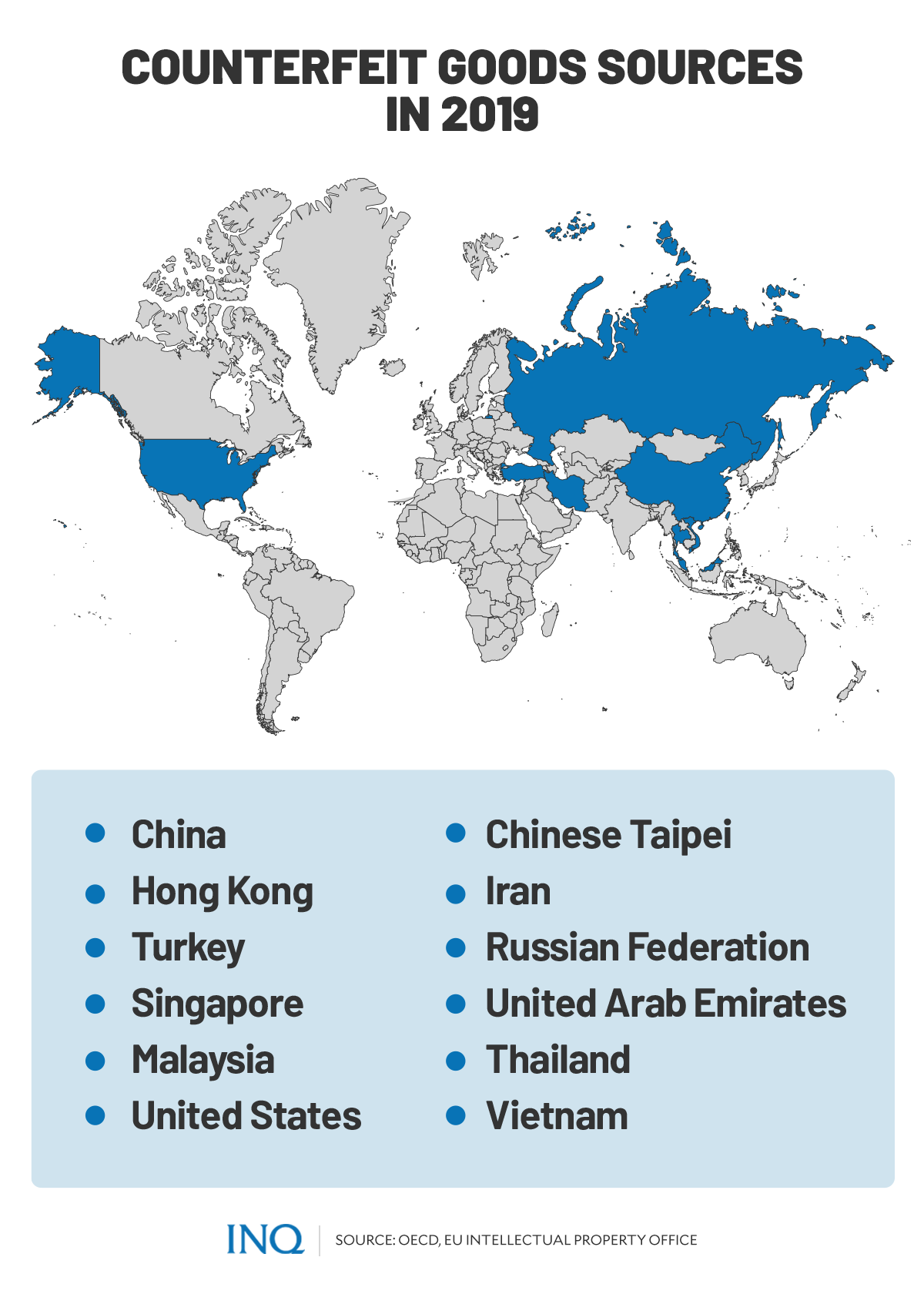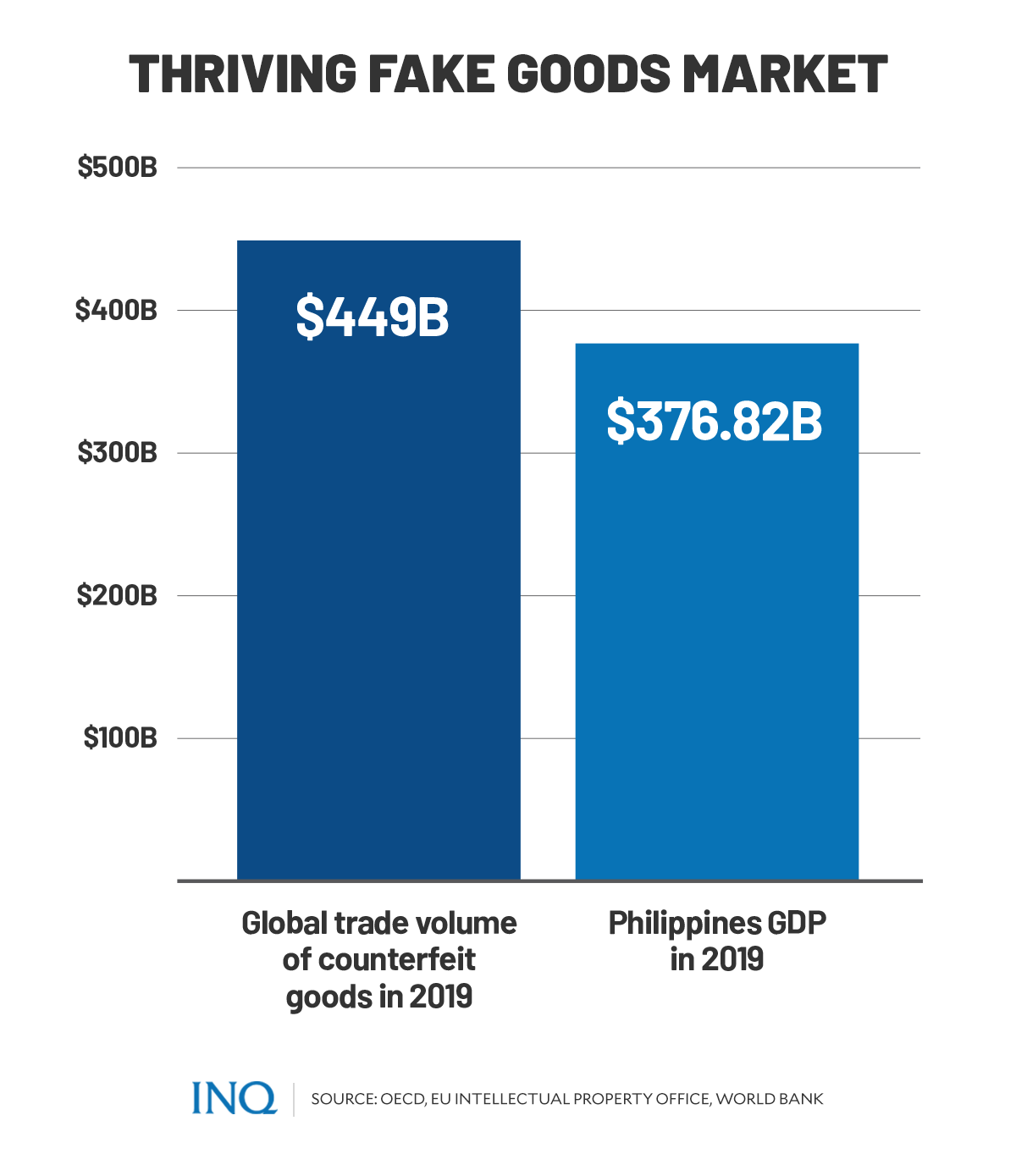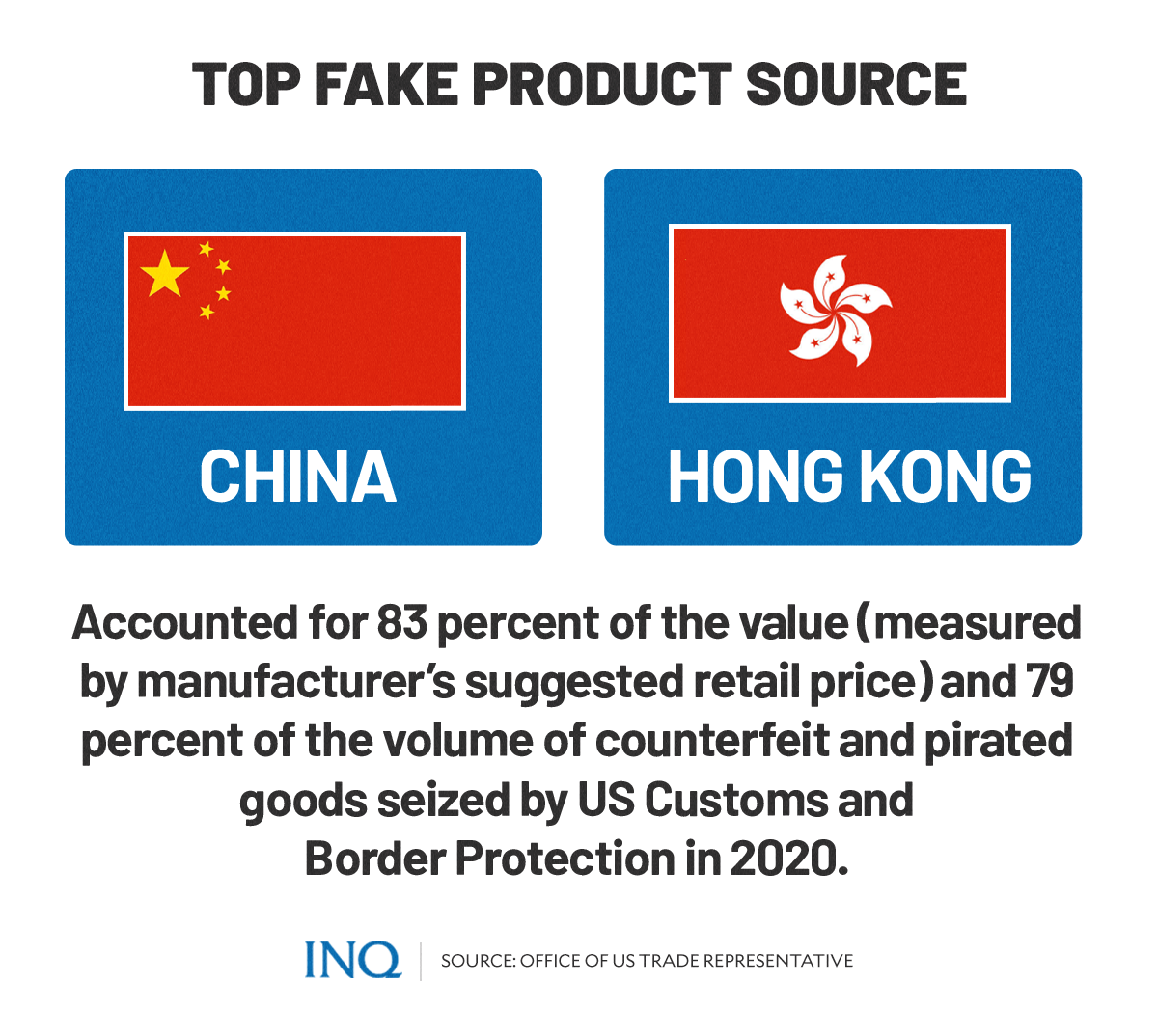Counterfeit trade watchdog warns vs fake printer inks sold online in PH

OFFICIALS of the Intellectual Property Office of the Philippines (IPO) join the Bureau of Customs in destroying counterfeit goods at a Bulacan warehouse in July 2021. The seized goods included fake Nikes, Adidas, Lacoste, Gucci, Victoria’s Secret, Jo Malone, Clinique and Dior. PHOTO FROM IPO
MANILA, Philippines—Amid the influx of counterfeit goods entering the country, a counterfeit trade watchdog warned consumers against purchasing fake printer ink bottles.
According to lawyer Jonathan Selvasegaram, head of counterfeit trade watchdog React Southeast Asia, fake Epson printer ink bottles are now being sold online in many countries across the globe—including the Philippines.
He warned that counterfeit ink bottles and cartridges for Epson printers are manufactured without quality control, which could lead to high chances of damaging printers.
“And since the use of fake ink bottles or cartridges will void most printer warranties, the continued performance of the printers based on specifications could no longer be guaranteed,” he pointed out in a statement.
“In the case of Epson, the use of counterfeit ink voids the company’s warranty for an Epson printer even if the printer is damaged. That can be a big problem for consumers and businesses.”
Article continues after this advertisementTo address the influx of fake ink bottles and cartridges sold online, Epson Philippines has posted a list of authorized dealers on its webpage at https://www.epson.com.ph/.
Article continues after this advertisement“Consumers can contact these stores and buy from them so they can be sure that they’re getting genuine printer ink as well as other Epson products,” said Selvasegaram.
The electronics company has also been coordinating with various institutions globally.
“The company is working closely with organizations in the anti-counterfeiting network, including React, law firms as well as e-commerce platform operators to continuously explore effective collaboration and methods to minimize, if not totally eliminate, counterfeit activities,” Selvasegaram shared.
“Such counterfeiting crime threatens to increase the costs of doing business, erode consumer confidence, inhibit business growth and result in lost productivity,” he added.
Record-high seized fake goods
In the Philippines, the value of counterfeit goods seized by the National Committee on Intellectual Property Rights (NCIPR) reached another record-high at P24.9 billion last year.
The figure was over twice the value recorded in 2020, which was P9.8 billion. In 2019, the NCIPR seized P22.1 billion worth of counterfeit goods in the country.
Four months into 2022, the different government agencies have already seized hundreds of millions of pesos worth of counterfeit and pirated goods in different parts of the country.
In April, authorities seized P190 million worth of counterfeit goods—including imported kitchenware, housewares, Intellectual Property Rights (IPR) infringing goods, and food stuff, among others—in Valenzuela City.
READ: P190M worth of counterfeit goods seized in Valenzuela
A month before that, the Bureau of Customs (BOC) seized some P100 million worth of smuggled counterfeit goods during a raid at a warehouse in Valenzuela City.
Among the seized items were used clothing (ukay-ukay), footwear of known trademarks such as Nike, Crocs, Sandugo, and other counterfeit items—which came from China and Bangladesh.
READ: BOC seizes P100-M smuggled fake goods
‘The era of fake products’
React is a global non-profit organization that has been tracking and fighting the counterfeit trade for more than 30 years.
“The selling of counterfeit products, such as fake Epson ink bottles, has been going on for years,” Selvasegaram said.
“But this malpractice has sharply increased – both in occurrence and magnitude – since the start of the COVID-19 pandemic when most consumers began making their purchases online.”
The selling of counterfeit items online has become such an extensive global problem that Wirecutter, a product review website now part of the New York Times Group, has categorized the current period as “The Era of Fake Products.”
Thriving global ‘fake goods market’
“The counterfeit problem is a challenge that is not unique to the Philippines,” he said. “It is happening globally,” Selvasegaram said.
Trade in counterfeit products has also become a huge problem in Indonesia, according to Selvasegaram.
In April, the West Jakarta District Court convicted Amrizal Als Malik, a producer and distributor of fake Epson ink bottles. Malik was sentenced to one and a half years of imprisonment and a fine of 500 million rupiah or P1.82 million.
During the trial, Malik told the court that he earned 200 million rupiah—P730,000—in just one year by producing and selling 200 to 300 fake ink bottles per week. He admitted that he unlawfully used registered trademarks belonging to Epson.
Printer ink bottles and cartridges, however, are just among the fake goods that are being traded worldwide.
READ: China continues to rule counterfeit world as market for fake goods keeps growing
According to a report by the Organization for Economic Co-operation and Development (OECD) and the European Union Intellectual Property Office (EUIPO), among the top product categories most subject to counterfeiting and piracy in 2019 were:
- Footwear
- Clothing (knitted or crocheted)
- Articles of leather, handbags
- Electrical machinery and electronics
- Perfumery and cosmetics
- Toys and games
- Watches
- Jewelry
- Optical, photographic medical apparatus
- Vehicles
- Clothing and accessories (not knitted or crocheted)
During that same year, the international trade in counterfeit and pirated goods amounted to roughly $449 billion or around P2.3 trillion—greater than the Philippines’ gross domestic products (GDP) in 2019, which was around $376.8 billion.
The OECD and EUIPO also found that in 2019, East Asia dominated the global trade in counterfeit and pirated goods—with China and Hong Kong at the top of the ranking.
Aside from China and Hong Kong, most volumes of counterfeit and pirated goods traded internationally also came from Turkey, Singapore, Malaysia, the United States, Taipei, Iran, Russia, United Arab Emirates, Thailand, and Vietnam.
“China continues to be the number one source of counterfeit products in the world,” the US trade representative said in the 2021 Review of Notorious Markets for Counterfeiting and Piracy report.
“Counterfeit and pirated goods from China, together with transshipped goods from China to Hong Kong, accounted for 83 percent of the value (measured by manufacturer’s suggested retail price) and 79 percent of the volume of counterfeit and pirated goods seized by U.S. Customs and Border Protection (CBP) in 2020.”
